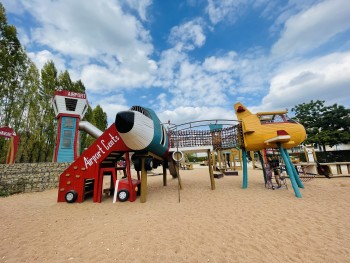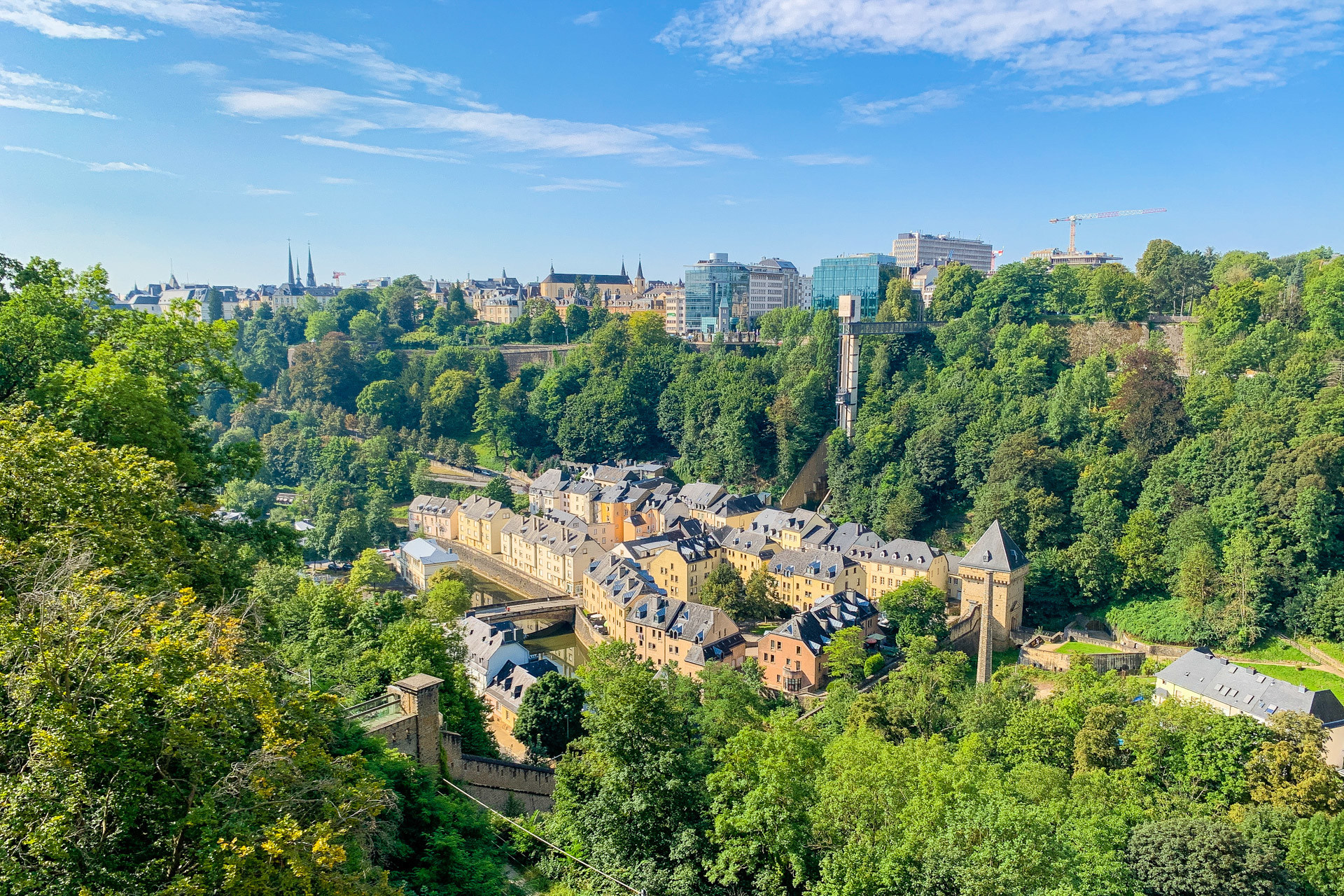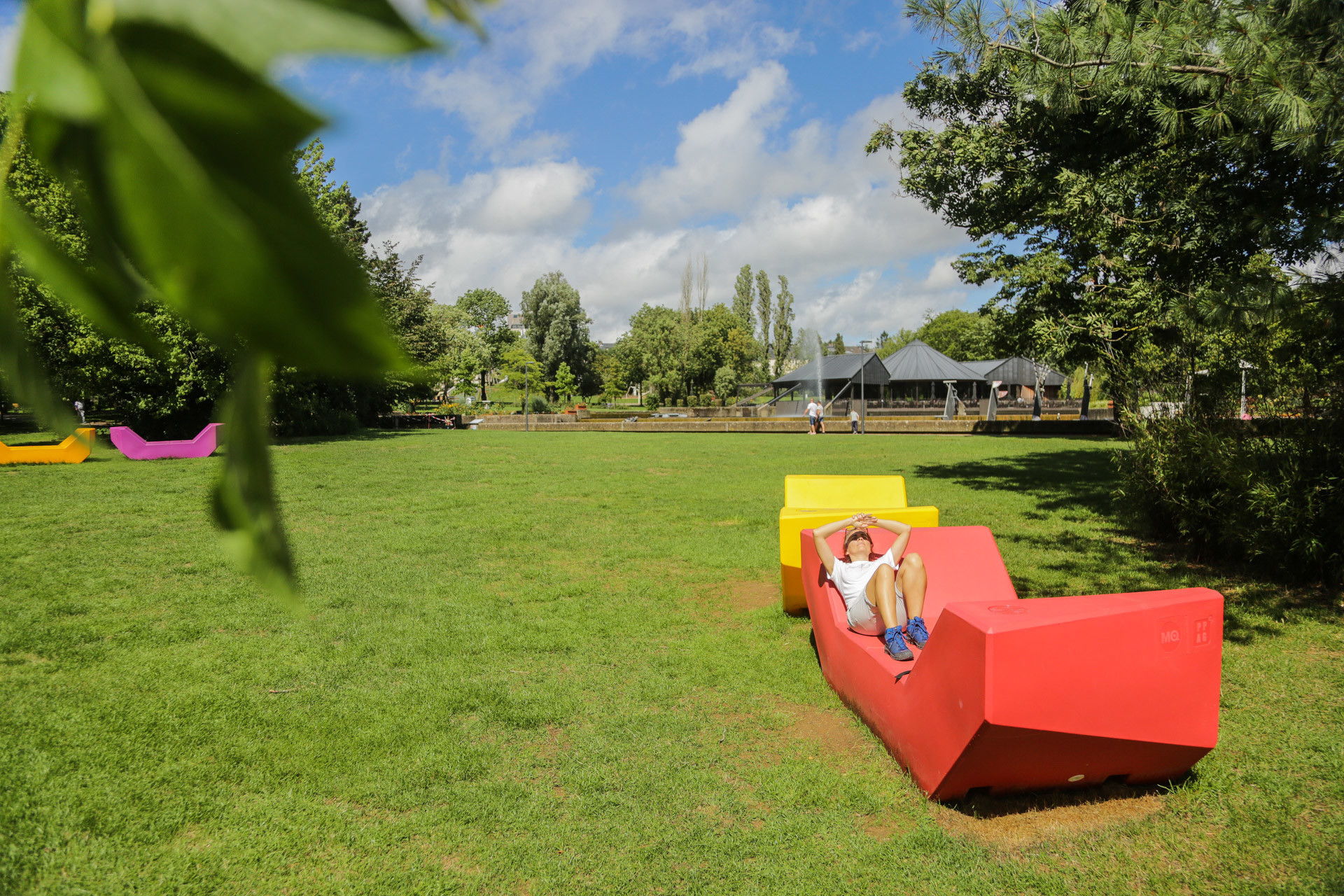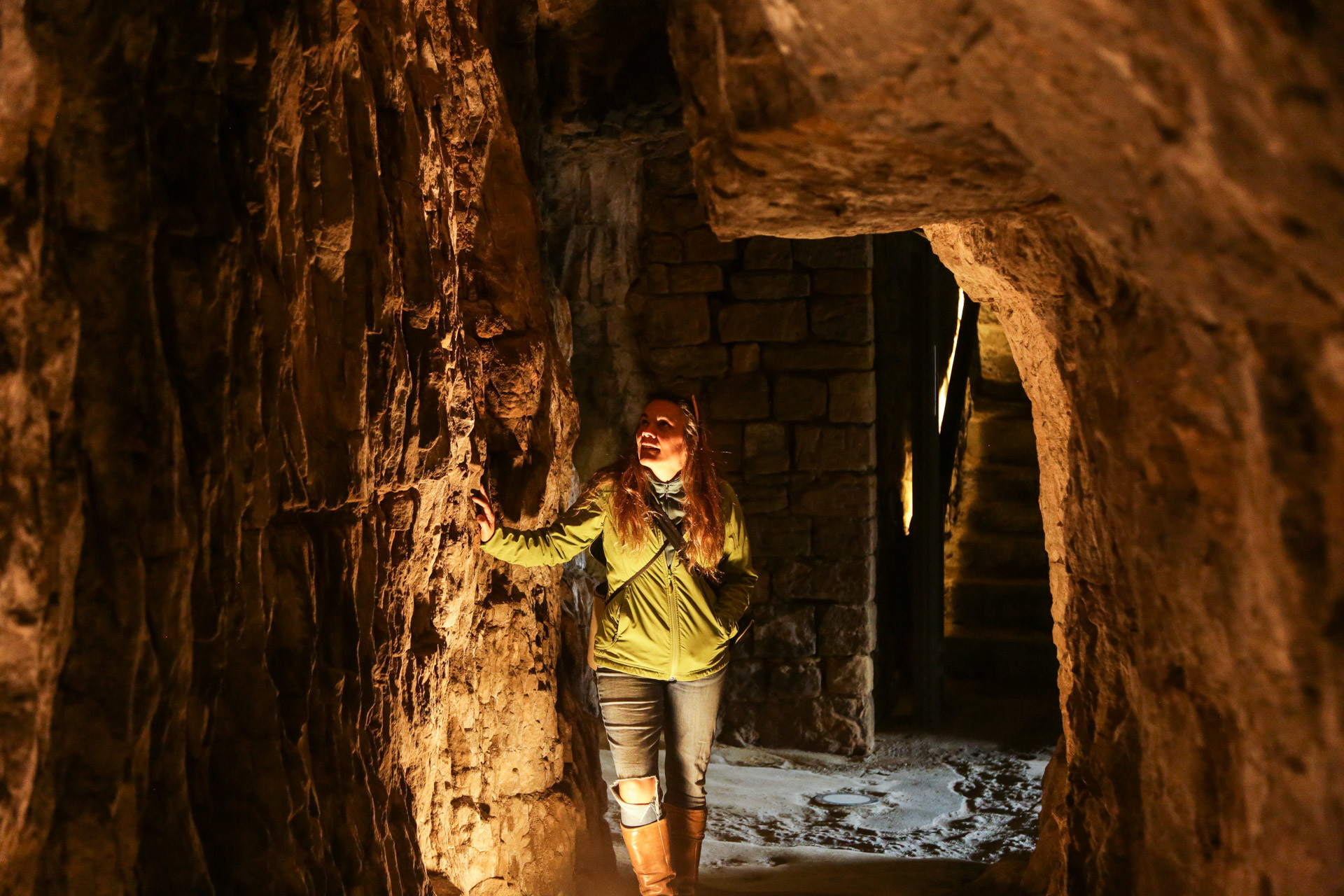
The 10 must-see bridges in Luxembourg City
Join Anabela and Jorge from diariesof as they explore some of the most enchanting bridges that make Luxembourg city a truly captivating destination!
Whether you're an architecture aficionado or simply someone who appreciates the graceful interplay of steel and stone, Luxembourg city's bridges are a must-see. As a city that is set on several levels, you can’t ignore its bridges. Luxembourg boasts a collection of stunning structures that span the city’s picturesque valleys and rivers.
1. The Four Viaducts in Luxembourg City
Luxembourg City is home to four remarkable railway bridges that gracefully traverse the Alzette Valley. These engineering marvels stand as testaments to the city's rich railway heritage. They serve not only as vital transportation links but also as enduring symbols of the city's rich history and architectural heritage.
- Dräi Eechelen Viaduct: The Dräi Eechelen Viaduct, with its modest length of 72 metres, is the smallest of the four. Despite its unassuming stature, it plays a crucial role in connecting the central railway station to the northern districts of the city.
- Pfaffenthal Viaduct: Spanning an impressive 260 metres, the Pfaffenthal Viaduct is the longest of the four. It arches over the Alzette Valley, offering panoramic views of the city's rooftops and the verdant landscape beyond.
- Clausen Viaduct: The Clausen Viaduct boasts an elegant design with its many arches stretching over a distance of 208 metres. Situated near the Clausen district, it adds a touch of grandeur to the city's picturesque surroundings.
- Pulvermuhl Viaduct (Biisser Bréck): The Pulvermuhl Viaduct, also known as the Biisser Bréck, is 242 metres long and gets its name from crossing over the Biisserwee. The four viaducts have been built with stone, according to the plans of the British Waring Brothers.
Construction: Waring Brothers
Construction years: 1859 to 1862
2. Passerelle (Old Bridge)
The Passerelle bridge, also called the Luxembourg Viaduct, is a historic landmark in Luxembourg City. Built between 1859 and 1861, it carries road traffic across the Pétrusse Valley, connecting the Gare to the Ville Haute district. This impressive structure stretches over 290 metres and reaches a height of 45 metres, offering stunning views of the valley below. With 24 arches, it is an architectural beauty, making it a must-see for anyone visiting Luxembourg.
The Passerelle can best be admired from the Pétrusse Valley and its eponymous park, where the Pétrusse creek flows leisurely through its new rewilded bed. It is the perfect getaway during warm summer days. For the adventurous, there is also the Skatepark Péitruss in the same park, just below the Passerelle.
Engineers / Constructor: Edouard Grenier and Auguste Letellier / Waring Brothers
Construction years: 1859 to 1861
3. Adolphe Bridge (New Bridge)
The Adolphe Bridge is a beautiful arched bridge in Luxembourg City. Built between 1900 and 1903, it was a marvel of engineering at the time, boasting the world's largest stone arch at 84,65 metres. It spans the Pétrusse Valley at a height of 42 metres, offering stunning views of the city.
Originally, the Adolphe Bridge also served as a railway bridge for the famous Charly train, a narrow-gauge railway line that connected Luxembourg to Echternach. The train line was named Charly in honour of Charles Rischard, the then Minister of Public Works. However, due to the expanding road network and the development of bus services, the route was discontinued in 1954.
In the beginning of the 20th century, there used to be a tram that ran over the bridge. That tram line stopped working in 1964 and we had to wait until 2017 to see a tram on the Adolphe Bridge again.
After renovation works that took place between 2014 and 2017, the upper deck now accommodates the new tram lines, car traffic and pedestrians. A suspended bike and pedestrian bridge has been installed underneath Pont Adolphe.
The bridge is a national symbol and a popular tourist destination, admired for its beauty and historical significance. On the eve of the National Day, part of the popular firework show is launched from the bridge.
Engineers: Albert Rodange and Paul Séjourné
Construction years: 1900 to 1903
4. Grand Duchess Charlotte Bridge (Red Bridge)
In Luxembourg City, a vibrant red bridge stands out against the landscape – the Grand Duchess Charlotte Bridge. More than just a bridge, it's a local landmark nicknamed the ‘Red Bridge’ for its striking paintwork. Inaugurated in 1966, it stretches 355 metres across the Pfaffenthal Valley, connecting the city centre to the modern Kirchberg district, a hub for European institutions. Standing 74 metres tall, the bridge offers panoramic views of the Alzette River, the charming Pfaffenthal neighbourhood, and the contrast between Luxembourg's historic and modern quarters. Whether you cross it by car, tram, bike, or on foot, the Grand Duchess Charlotte Bridge is a must-do experience, providing a unique perspective of the city.
Architect: Egon Jux
Construction years: 1962 to 1966
5. Castle Bridge at the Bock Promontory
Luxembourg City's Castle Bridge (Schlassbréck) boasts a rich history and unique design. Built in 1735 from red sandstone, it replaced an older wooden drawbridge and provided a vital passage between the Upper Town and the Bock Promontory. Unlike most bridges, the Castle Bridge offers multiple ways to cross. Vehicles use the topmost roadway, but pedestrians have other options. One path traverses the four upper arches, another winds down a spiral staircase within a lower arch, and a third passage leads under the bridge through the casemates, a network of underground galleries carved into the rock. This multi-level design reflects the bridge's role as part of the city's historic fortifications. Restored entirely in the early 1990s, the Castle Bridge remains a popular landmark and a testament to Luxembourg's enduring defensive architecture.
Construction years: 1735

6. Grund Bridge (Rue Münster)
The Pont du Grund, or Rue Münster bridge, is a stone bridge carrying Rue Münster across the Alzette River. As a vital link between the two sides of the charming Grund district, it offers picturesque views of the historic neighbourhood.
Crossing the Pont du Grund takes you into the heart of the Grund, where you can explore its narrow streets and quaint cafes. This oldest part of the city, dating back to the 14th century, was once protected by ancient fortifications. Rue St Ulric, next to the bridge, was once a bustling commercial street but lost its prominence with the construction of a bridge over the valley and the arrival of the railway.
Today, the Grund Bridge continues to be a lively spot. From May to October, on the first Sunday of each month, it hosts the 'Konscht am Gronn' art exhibition, featuring local and international artists showcasing various art forms, from paintings and sculptures to photography and glasswork.
7. Stierchen Bridge
Nestled in the heart of Luxembourg City, next to the Abbey of Neumünster, lies the Pont du Stierchen, a small, charming bridge. Built around the mid-15th century, it graces the Alzette River and used to be flanked by two towers (one of the towers was dismantled in the 17th century). The bridge is part of the Wenzel wall, built to include the Grund and the Rham Plateau into the defence ranks of the city of Luxembourg.
Its design is both beautiful and sturdy, constructed from a combination of coloured limestone and granite blocks. The upper part of the two-arched bridge, rebuilt in 1983, served as a Chemin de Ronde, a walkway that allowed guards to patrol the tops of the ramparts.
Construction years: 15th century
8. Béinchen Bridge
The Béinchen Bridge was part of the former fortress of Luxembourg in the Pfaffenthal district, connecting the valley between the two Vauban Towers (Eich and Bons-Malades Towers). The bridge, adorned with three graceful arches, was constructed between 1684 and 1685 based on a design by the renowned military engineer Vauban, who identified this area of the Pfaffenthal as the weakest point of the fortress and designed the construction of these towers to be incorporated into the fortress. His expertise was crucial in transforming Luxembourg into a formidable European fortress.
Engineer: Sébastien Le Prestre de Vauban
Construction years: 1684 to 1685

9. Passerelle des Arts
A new bridge for pedestrians and cyclists has been inaugurated recently (2024), connecting the Avenue John F. Kennedy near the Red Bridge with the Parc des Trois Glands near the Mudam. The bridge is made of stainless steel with a mirror polish on its exterior, creating an illusion of invisibility, as if the bridge disappeared into its surroundings, reflecting the natural environment.
A crucial aspect of this project is its commitment to preserve the natural environment. The location of the bridge was carefully chosen in order to minimise the destruction of the forest and to preserve as many existing trees as possible. Additionally, the bridge’s limited number of supports (three) minimises the impact of the structure on the forest and clearing. The design and layout were meticulously planned to accommodate the growth and movement of existing trees. The lighting system is designed to avoid disrupting the nocturnal life of local fauna.
Architects: Marc Mimram Architecture Ingénierie, Fabeck architectes
Construction years: 2022 to 2024
10. Jean-Pierre Buchler Bridge
This bridge has been renewed and enlarged so that, besides normal traffic, it now accommodates the new tram route and a new bicycle and pedestrian ramp since 2023. This pedestrian and cycling ramp connects to the Mühlenweg, an essential link to the PC103 express cycle route, which forms the backbone of the A3/CFL90 cycle network linking Luxembourg City to Dudelange.
The 100 metres-long bridge spans thirteen railway tracks, and its width has been doubled from 20 to 42 metres.
Redevelopment: 2023
Luxembourg City, with its captivating landscapes and rich history, offers a plethora of enchanting viewpoints to discover. So, whether you're seeking the charm of the old town or the allure of the modern cityscape, be sure to explore these incredible viewpoints and let the captivating panoramas of Luxembourg City leave an indelible impression on your soul.
diariesof

Anabela and Jorge Valente, avid travellers themselves, are the passionate founders behind the independent travel magazine, diariesof. With a deep love for authentic experiences, they explore the world on their motorcycle, immersing into foreign cultures and embracing the spirit of adventure.
While they are spending time at home they also like to enjoy and rediscover their home country Luxembourg. In their City Adventure series, Anabela and Jorge share their recommendations and personal experiences with visitors of the capital.

Among many other magazines on faraway destinations, they have also published an inspiring magazine about Luxembourg, available on their website.
Other city adventures





































